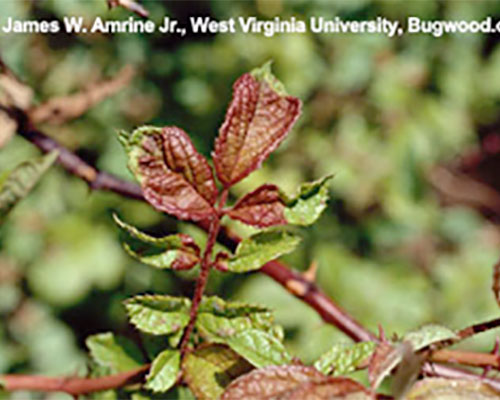
Melinda’s Garden Moments is heard Mon.-Fri. at 7:45 and 10:45 a.m. and 4:45 p.m. on WHAV.
Abnormally red leaves and stems, deformed leaves and fine twiggy growth may mean the Rose Rosette virus has infected your rose plant.
A very tiny mite spreads the disease from infected to healthy rose plants. Controlling the mites with horticulture oil and insecticidal soap can help reduce the risk.
The invasive multiflora rose is highly susceptible and its presence in or near ornamental rose plantings has helped spread the disease. Eliminate multiflora roses within 100 yards of your landscape, if possible.
Remove infected roses immediately to reduce the spread of this disease to your healthy plants.
Use a variety of plants properly spaced to reduce the risk of insect and disease problems.
You can replace infected plants immediately with non-susceptible plants or wait until all the diseased plant debris, roots and all have been removed if using roses.
A bit more information: Don’t know if multiflora roses are a problem in your area? They are often found growing wild on roadsides and pastures. These upright plants have arching branches that can be 3 to 10 feet long. The small fragrant white to pink flowers appear in late spring to early summer. For more on this disease click here or visit Clemson.
For more gardening tips, how-to videos, podcasts and more, visit www.melindamyers.com.

